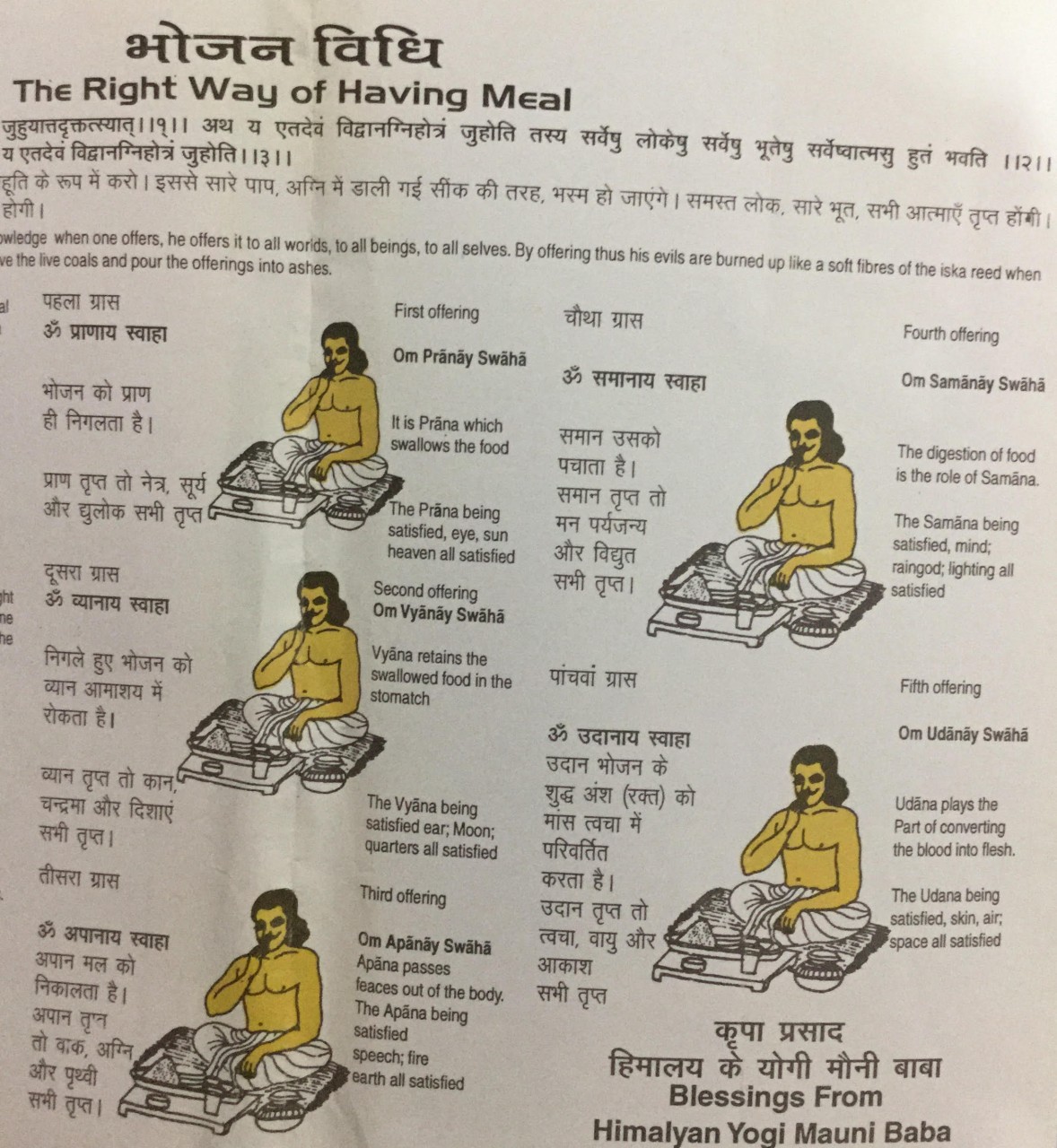Pancha(Five) Prana(the vital life force)
The energy of the cosmos that exists in the physical body is known as prana. It is this energy that is manifest in all matter, and the same that flows within the body to keep every organism alive and active. The word prana in yogic parlance can mean
Prana=Vital life force; Prana=vital air-Vayu; and also Prana= prana-the same word applies to the Vayu that flows in the chest to thorax region.
The Yoga vashistha 3:17 says that this divine vital air, prana, does everything in the body: much like a machinist performs the actions of the machine.
As per yogic physiology, this vital air-prana Vayu is divided into five major and five sub types in the body. For this blog, I shall endeavour to explain the five major Prana Vayu in the body: they are called the Panch Prana. These are classified according to their location and functions in the body
Apana: the downward flowing Vayu which located from the navel to the mooladhara- the base plexus. This is responsible for all excretory, reproductive functions and governs the large intestine, kidneys, anus and genitals. It is associated with the element of water
Samana- the sideways flowing Vayu from the navel to the diaphragm. It is responsible for all digestive and metabolic functions including the circulatory system and governs the heart, liver,small intestine, stomach, pancreas and their secretions. It is associated with the element of Fire.
Prana: Prana Vayu is upward flowing from the chest to the thorax. This governs the Lungs, larynx and chest region: it is that force by which breath is drawn into the body. It is associated with the element of Air.
Udana: governs the area above the neck and is responsible for all the sense organs. It governs thought and consciousness; harmonises and activates the limbs and all their associated nerves, ligaments, muscles and joints. It is the reason we can maintain an erect posture. It is associated with the element of ether, space.
Vyana: pervades the whole body, regulates and controls all movement and co ordinate the other prana vayus. It is the reserve force for the other pranas.It is associated with the element of Earth.
In yogic anatomy, there exist five vital sheaths(kosha) that encompass the body: the pranas are part of the pranamaya kosha and termed as the pranic body. Lifestyle has a huge impact on prana and the pranic body reflects it. The physical body works to maintain homeostatic balance, sustained and supported by prana.
Yoga Vasishta (712-720) explains that imbalance in prana affects digestion and hence, the physical body to create disease. Disease can be psychosomatic(arise in mind and affect the body) or somatopsychic(arise in body and affect the mind). Yogic physiology differentiates between the body(annamaya kosha)and prana(pranamaya kosha) to clearly indicate that the body-mind complex is dependent on prana. Free flow of prana through the Nadis(energy channels of the body) nourishes the muscles,nerves,cells, organs and all parts of the body to enhance vitality, dynamism and overall well-being.
The beauty of the applied knowledge of pranas and the relationship to digestion is contained in the verse of the Bhagavad Gita(chapter 15:14) which is used as a prayer before meals :
अहंवैश्वानरोभूत्वाप्राणिनांदेहमाश्रित: |
प्राणापानसमायुक्त: पचाम्यन्नंचतुर्विधम् || 14||
ahaṁ vaiśhvānaro bhūtvā prāṇināṁ deham āśhritaḥ
prāṇāpāna-samāyuktaḥ pachāmy annaṁ chatur-vidham
aham—I; vaiśhvānaraḥ—fire of digestion; bhūtvā—becoming; prāṇinām—of all living beings; deham—the body; āśhritaḥ—situated; prāṇa-apāna—outgoing and incoming breath; samāyuktaḥ—keeping in balance; pachāmi—I digest; annam—foods; chatuḥ-vidham—the four kinds
Meaning: I am present in all beings in the form of digestive fire. United with the Prana (exhalation) and Apana (inhalation), it is I who consume the four kinds of food.
The connection of the universal prana(life force) that is imbibed as food and breath is thus made clear in this verse. This verse is followed by an ahuti(offering) to the five prana resident in the body- it is done by infusing the first five morsels with the name of a respective prana: Om Pranaya Swaha; Om Apanaya Swaha; Om Vyanaya Swaha; Om Udanaya Swaha; Om Samanaya Swaha and finally, Om Brahmanaya Swaha to the universal spirit.
How to balance pranas and thus elements(doshas: are a combination of elements to determine Ayurveda body types) in the body using Asana?
Apana: Hip opening and prone asanas;
Samana: Forward bending and sitting Asana;
Prana: Backward bending and moving/dynamic asanas
Udana: Inversion and some sitting asanas
Vyana: Balancing and standing asanas
Kriya, bandha, mudras and pranayama can also be applied to balance pranas.
Ayurveda takes the specific prana imbalance as per the aggravated dosha into consideration when medicines are administered. The timing of day/ night cycle for taking medication is advised to improve the efficacy of treatment according to the affected prana Vayu. This is also affected by specific seasons and sun and moon phases. The common timing are sunrise, during daytime meal, during evening meal, repeatedly throughout the day and at night



